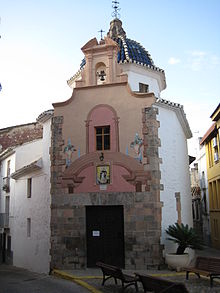User:Mariasepe/sandbox
The Magdalena's Festivities are the major festivities of Castellón de la Plana. It's purpose is to commemorate the origins of the city, remembering the move of the city from Magdalena's Hill to the coastal fertile plain in 1251.
They have a duration of 9 days, they start the third Saturday of Lent and they were declared of International Tourist Interest in 2010.[1]
Dates of the Festivity
[edit]- 2015: from the 7th to the 15th of March.
Next celebrations[2]
- 2016: from the 27th of February to the 7th of March.
- 2017: from the 18th to the 26 of March.
- 2018: from the 3rd to the 11th of March.
- 2019: from the 23rd of March to the 1st of April.
- 2020: from the 14th to the 22nd of March.
The first day of the festivities of Magdalena is the third Saturday of Lent.
Considering that the first day of Lent (since the First Council of Nicea in 325) is the first Sunday from the 14th day of lunation of Spring equinox, M. Armengot calculates (by the Gauss law) the 156 dates from 1945 to 2050 that belong to the start of the festivity in each year:
It's important to know that, from 1945 (the date when the first celebration of the festivity started), the year with the most early celebration of the festivities was on 2008, from the 23th of February to the 2nd of March; on the other hand, the latest celebrations were the ones of 1981, between the 28th of March and the 5th of April.[3]
Incidentally, in 1948 and 2032, the great day of the festivities, the Sunday of Magdalena (third Sunday of Lent and first Sunday of the week of celebrations), is the 29th of February. The peculiarity of this day (the coincidence of the day with the date of the 29th of February), will only happen once in the whole XXI century.

La ermita de San Vicente Ferrer de Onda (Province of Castellón, España) está construida sobre el lugar en que, según la tradición, predicó San Vicente Ferrer en su visita a Onda en 1412, después de intervenir en el Compromiso de Caspe.
Se trata de una ermita de planta central con cúpula de media naranja con iluminación natural superior. Está adornada con pilastras de orden corintio.
El altar presenta cuatro columnas corintias, quedando indicado en el mismo la fecha de 1792. Tiene dibujos al fresco en las pechinas con Santos de la Orden de los Dominicos. Consta también de cuadros en los dos muros laterales.
En la fachada exterior se puede ver un panel devocional de cerámica representando al Santo titular (siglo XIX).
La cubierta es de teja cerámica vidriada de color azul, con los límites de su base octogonal en cerámica blanca. El resto de la cubierta es de teja cerámica y el remate de hierro forjado.
Referencias
[edit]
Categoría:Ermitas de la provincia de Castellón
Categoría:Onda
Categoría:Arquitectura en España en el siglo XV
- ^ Europa press (12 de marzo de 2010). "Fiestas de la Magdalena, declaradas de interés turístico internacional". Retrieved 15 de marzo de 2010.
{{cite web}}: Check date values in:|access-date=and|date=(help) - ^ Calendario futuro de las fiestas de la Magdalena, Ayuntamiento de Castellón de la Plana
- ^ Año de celebración de las Fiestas de la Magdalena desde 1945

